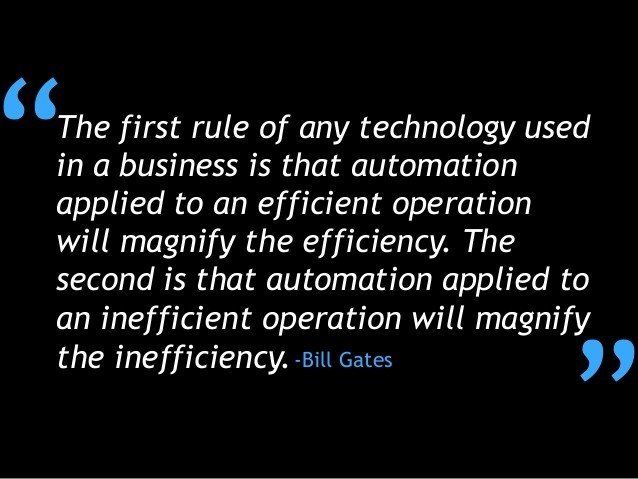Multiple ERPs… a mistake or a sound strategy?
Why do companies end up having multiple ERPs?
When most people think of an ERP, they think of one single system. However, many companies end up having an array of ERP systems and other applications because of mergers and acquisitions, and regional or divisional independence.
Some companies own multiple instances of the same ERP while others find themselves with multiple ERP systems from different vendors. Additionally, most new implementations still overlook other possibilities when it comes to ERP systems and always look at the major players such as SAP, Oracle, Infor, IFS, or Microsoft Dynamics. But if you look at the marketplace for ERP Software, there are over 200 solutions to date.
In a merger or acquisition (M&A) the company ends up with multiple enterprise applications. Like a cultural change, it takes time to bring about synergy between the processes and systems. Afterall it makes no sense to change processes and systems overnight just because of a merger or acquisition. If a company has a well implemented ERP, it is a good indication of the maturity of the business and its processes.
When two companies merge, or acquire another, rarely do you find a perfect match where both companies use the same ERP system. Companies often find themselves working with multiple ERPs and having to deal with multiple groups of employees in their IT teams trying to maintain the different systems with the support of different ERP vendors.
There are many who are ultimately suffocate with the weight of having too many disconnected or poorly integrated set of ERPs. At the other end of the spectrum, there are a few who thrive with multiple ERPs because they have implemented better integrations and have well-defined processes.
Let us look at the most common integrations that is available today.
What are the available options for integration?
Adopting and applying the logic from the Mergers and Acquisitions theory to the ERP domain gives us three main categories:
- Absorption and Tuck-in – During “absorption” the companies that merge are approximately similar in size and complement each other. In this case the company that is been bought will be pushed to adopt the purchasing company’s processes and systems. Here the company that is doing the purchasing minimizes risk and gain synergy rather quickly. During a “tuck-in” the company that is been bought is much smaller compared to the company that is doing the purchasing. Often, the companies are in the same trade, and focus is on a quick integration.
- Transformational – This is a collaborative approach to executing a business process re-implementation (BPR) in order to work in a new and improved way. This method provides a clean sheet of paper to get the best output from the merger or acquisition and require a lot of time and energy to combine the workflows and automate them with a single ERP system. You would need experienced ERP Consultants working together with business super users to carefully map the workflows to the new system. Most companies opt out of this approach and let the individual sites support their own ERP systems until the business processes are streamlines, which brings us to the next category.
- Standalone – The acquired company is kept largely intact and separate. This method is mostly used when companies are in different industries or when they do not complement each other. This usually happens when a company is diversifying its portfolio. There are always hidden costs involved when entering the same records in more than one system or worse, compartmentalizing functions just to keep life simple. In such situations it is not uncommon for a business to maintain a mix of integrated suites and best-of-breed ERP systems.
Lessons from the past...
In November 2015, a giant in the non-destructive testing (NDT)
industry in the US acquired an unmanned and robotic inspection solutions provider which produces drones and robotic crawlers. This is an example where the company in the NDT industry serves as the platform where tuck-in acquisitions are conducted to add complementary services and technology. The NDT company already had a stable version of its ERP system (IFS Applications) implemented and could easily benefit by having its ERP capabilities expanded to the acquired robotics company, especially in the service and maintenance areas.
Another example is that of a global packaging solutions provider that went through a series of mergers, acquisitions, re-branding, and sales exercises with an aim to have more focused and leaner business units. The changing business environment moved the company more towards the printing and packaging industry in the food market. This triggered the need for reshaping the ERP systems since neglecting them can lead to a more complex ERP system that has features and functionality that is no longer needed or worse still a system that does not have the functionalities critical for the day-to-day operations.
The company ended up with different business units using different ERP systems including Microsoft Dynamics AX and NAV, JD Edwards, Baan, Sage etc. At present all ERPs are operating on a standalone mode with minimum integrations. This method of operation turned out to be a blessing in disguise during the sale of some of its business units since the ERP systems could still operate in isolation.
Consolidating ERP systems – an unpopular but necessary strategy?
When you have multiple ERP systems, each one will require one or more interfaces into the required standard integration points. The more interfaces required, the more time and money are necessary to develop and support them. By exploiting opportunities to develop some level of commonality in the interface designs, you can reduce the number of interfaces or avoid rework later. A detailed discussion on this topic deserves a separate article and is beyond the scope of this post.
Multiple ERP systems deployed across the company also poses a logistical challenge. In a perfect world, sticking to a single but a flexible ERP system that can handle the needs of all sites in one instance is the most desired approach. There are many good ERP solutions that provide a wide scope of functionalities, but they are yet to offer a complete solution without some degree of customizations.
If consolidation is an option, it makes sense to consider an upgrade
(that is to uplift the ERP solutions to a newer version) together with the consolidation. At present, ERP vendors on average issue major releases every two years. Upgrades will help the company keep up with the technology improvements. By combining both projects, you kill two birds with one stone, as businesses would not appreciate having to constantly change their operations to adapt to the functionality offered through the ERP system.
A successful consolidation will almost certainly simplify the day to day operations, automate the inter-company processing, and will provide streamlined reporting. If successful, the outcome will bring very desirable results.
A single system may not always be the most practical way to address an organization’s requirements, since businesses are becoming more complex and are evolving more quickly than ever, they are seeking ways to enhance unique niches to differentiate themselves from competitors.
Best-of-breed solutions provide systems that are built with the depth to address specific functional areas, delivering stronger functionality in that focused area. But this will only wreak the integrations between departments and ultimately end up having interfaces between the best of the breed solutions to reduce manual work.
Having “inquiry-only ERP systems”
I have seen companies, having gone through all the trouble of integrating the systems as discussed, only to keep the previous ERP system running on "inquiry mode", for the sole purpose to run an occasional inquiry against historical data. Of course, there is the rare case where loss of data meant the company would find itself in a state of non-compliance with regulatory requirements. But the solution to that is not to have “inquiry-only” ERP systems.
Instead consider having a separate data archiving environment
and link it to your business intelligence solution and make use of aggregate reporting. Many companies for whatever reason rarely maintain a separate data-archiving environment but setting up one would allow the company to respond to requests for information in a timely manner as well as to produce consistent reports across all its data in formats that are ready for audit.
Things to consider during the integration process
Whatever the methods involved and adopted for the integration of the processes and the ERP systems, both sides should ensure they can operate on a day-to-day basis without inconveniencing the customer. An integration plan must work with the type of integration, key resources, duration, and the budgeted investment.
Forming a team with skilled resources is key. Important decisions such as, who to be reassigned from their day-to-day work, resourcing experienced ERP consultants, and identifying risks taking in to consideration the geographic reach of the other companies could pave way to a smooth project.
Single-instance vs. Multi-instance ERP systems
An “instance” is simply an installation of an ERP application. Therefore, a single-instance ERP is one that uses a single ERP system for all your business operations across all sites. Multi-instance ERP solutions are commonly used by businesses that operate globally to accommodate each country’s regulatory or statutory needs. These needs could be related to tax systems, payroll, and other statutory and practical requirements.
Companies usually begin running a single-instance ERP solution, but as they try to keep up with increasing workloads, improving technology, or results of strategies relating to mergers and acquisitions, they may need to consider multiple instances as an alternative.
Whatever the approach, frequent revisits to ensure the business processes match the workflows offered in the ERP is vital; especially when you have a highly industry-specific solution implemented.
WIA Systems’ ERP experts can assist you to untangle your ERP integrations, so get in touch with us to see how we can help you.











